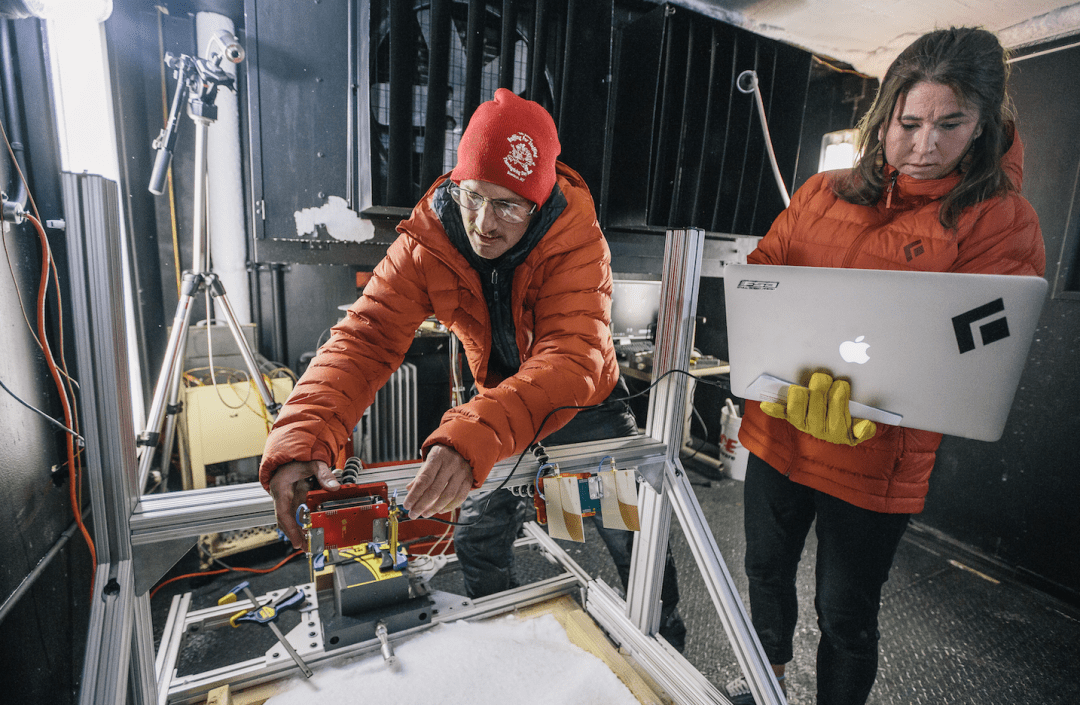MSU research could improve snowpack monitoring and runoff forecasting
Tuesday Jun. 19th, 2018
As a record snowpack across much of Montana fills streams and floods parts of the state, a Montana State University researcher is exploring ways to improve how forecasters monitor the amount of water contained in snow across the landscape.
Kevin Hammonds, assistant professor in the Department of Civil Engineering, received a $250,000 grant from NASA in March for a study that could have widespread implication for municipalities, farmers and ranchers, and engineers who manage reservoirs.
The research will take advantage of specialized tools in MSU’s Subzero Science and Engineering Research Facility in the Norm Asbjornson College of Engineering to measure how microscopic changes in snow crystals affect how snowpack is quantified remotely by aircraft and satellites.
“It became apparent to me that we’re set up really well at MSU to do this work,” Hammonds said.
Currently, snowpack forecasters rely on a relatively small number of ground-based sensors and must extrapolate across large areas, which can cause inaccuracies. NASA is in the early stages of developing a network of aircraft and satellites for measuring snowpack across entire landscapes using radar. But for that to work, those measurements need to be calibrated to the actual conditions on the ground, according to Hammonds.

Joseph Akers, a materials science doctorate student, left, handles a radar component while calibrating with visiting scientist Alecia Jongward, a physics teacher at Park High School in Livingston, Montana, on June 12, 2018, in the Subzero Lab at Montana State University in Bozeman. Both are collaborating with MSU assistant professor Kevin Hammonds on snowpack research. MSU Photo by Adrian Sanchez-Gonzalez
“Our timing is perfect,” he said.
Other researchers in MSU’s world-renowned snow science program have likened snow to a shape-shifter whose microscopic properties change with the weather. Extended periods of cold can cause a snowpack to take on the consistency of granulated sugar, while a single cold night can frost the surface with feathery ice crystals. Because snow characteristics could change radically in a matter of hours, it’s difficult for researchers to compare aerial observations with ground conditions.
“In the lab here, we can control all those variables,” Hammonds said.
The Subzero facility includes snow-making equipment and a cold room where humidity and other variables, including the temperature of the ceiling and floor, can be precisely controlled to mimic natural conditions. Hammonds’ team will replicate various snowpacks and then measure the snow’s water content with a radar sensor like the one used for NASA’s aerial studies. Hammonds is working with a local company, Flat Earth Inc., to develop the radar tool for the lab.
Hammonds will also use powerful microscopes in the Subzero facility to study the composition of individual snow crystals, providing further clues about how a snowpack’s smallest details could affect how it is measured at a landscape scale.
Ideally, the results would produce algorithms that would be used to calibrate the data from NASA’s aircraft and satellites, Hammonds said. The research could even influence the kinds of sensors that go on future spacecraft, he said.
According to Jerry Stephens, head of the civil engineering department, the research could be very useful in Montana and other western states in predicting annual runoff and associated flood or drought concerns.
“This study takes advantage of MSU’s world-class snow and ice research facilities, as well as Kevin’s extensive background in ice research,” Stephens said, adding that since Hammonds joined the department last year, he has broadened and strengthened MSU’s snow science program.
Hammonds’ research is being funded by NASA’s New (Early Career) Investigator Program in Earth Science. Hammonds was one of 32 researchers selected nationwide from among 141 applicants.
| Tweet |